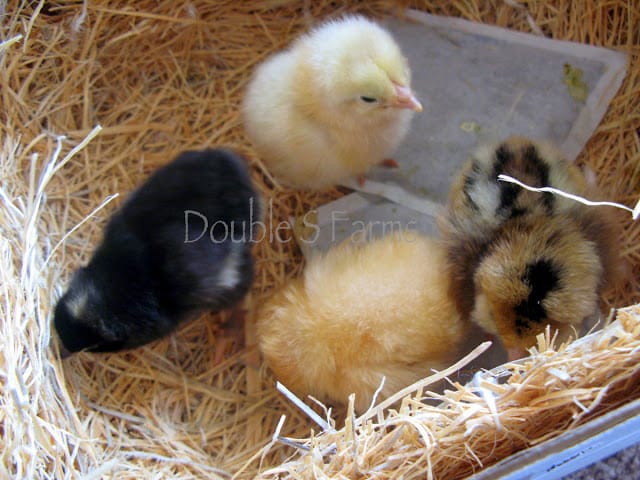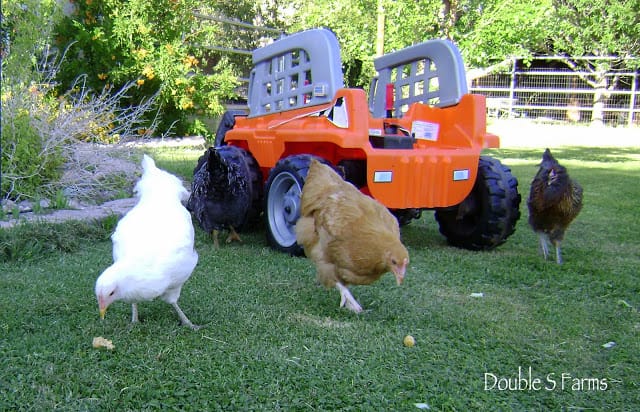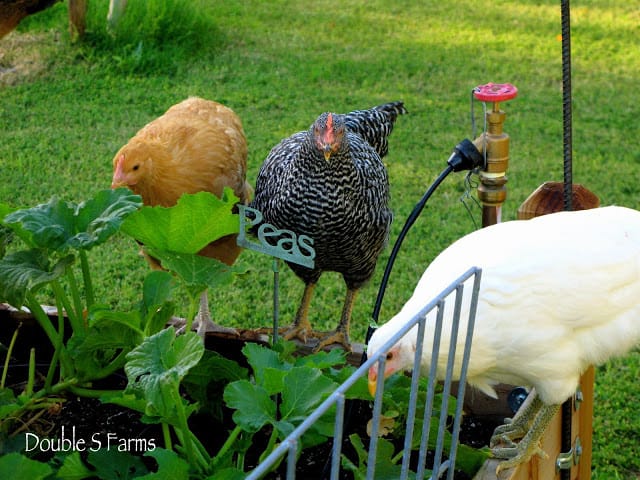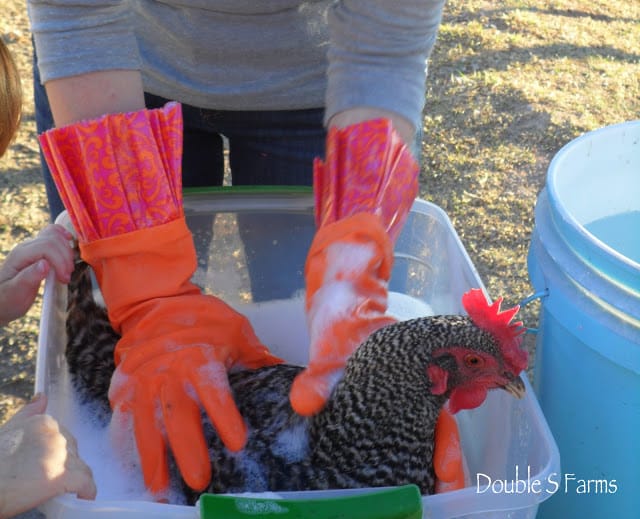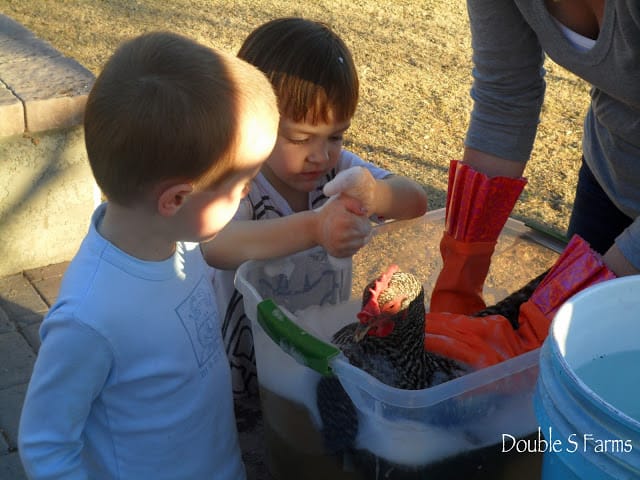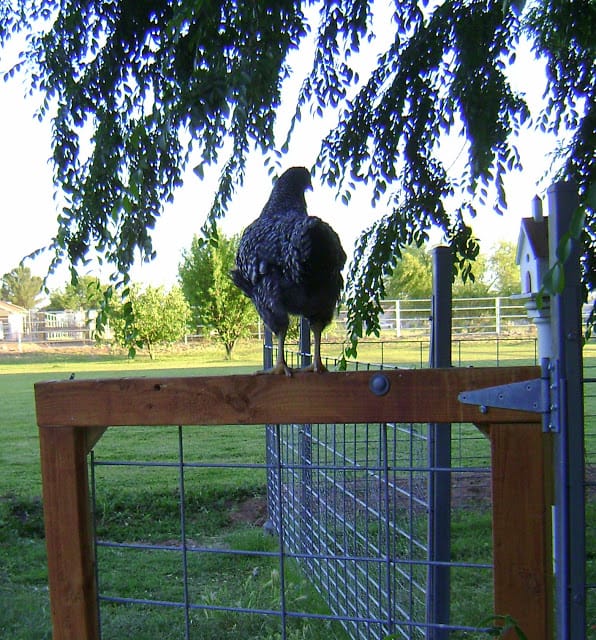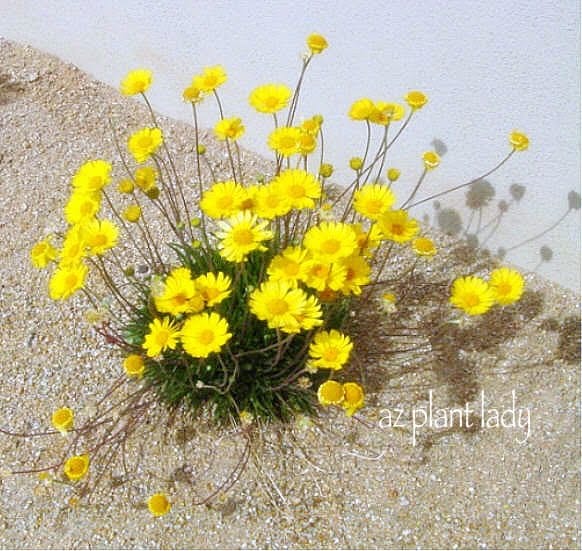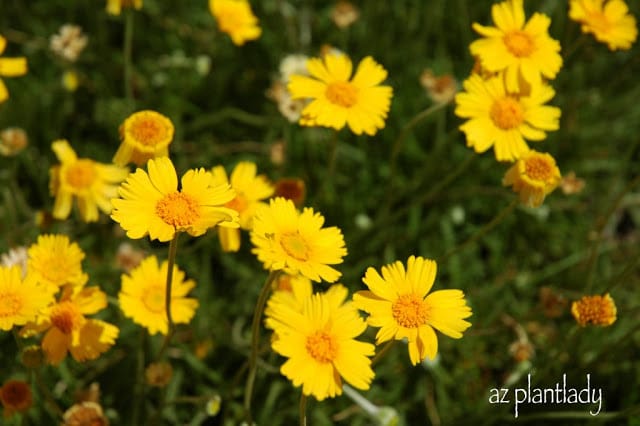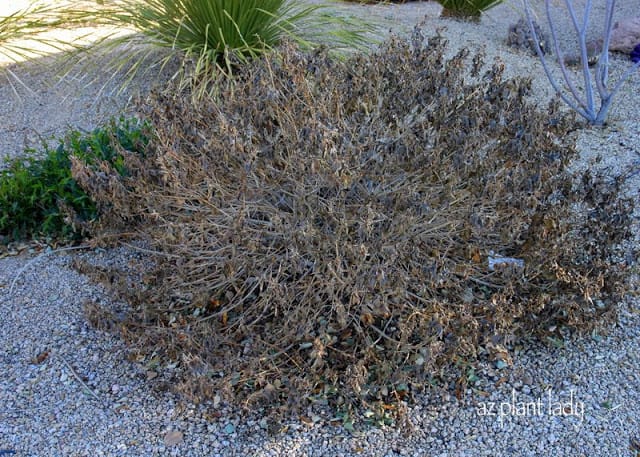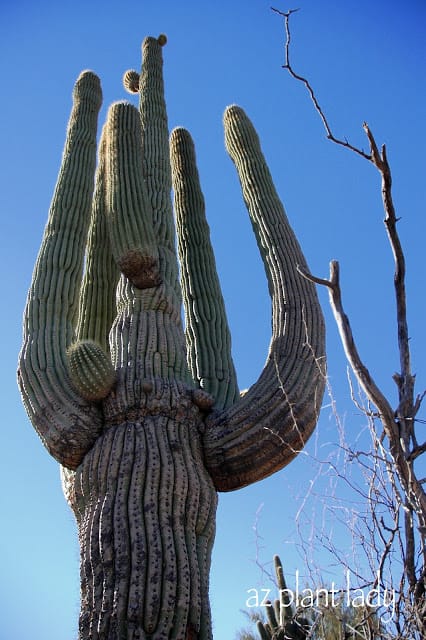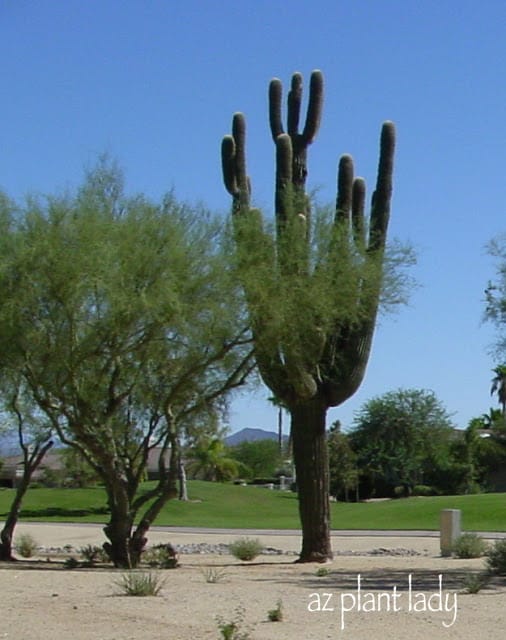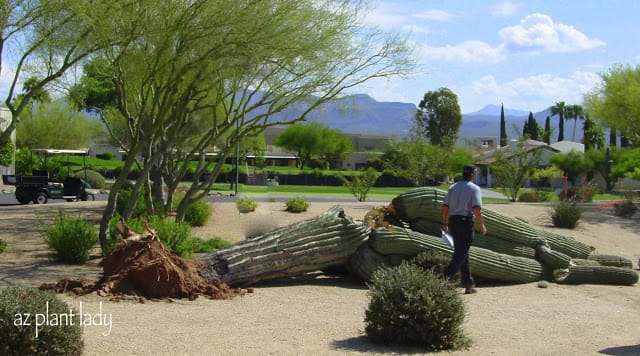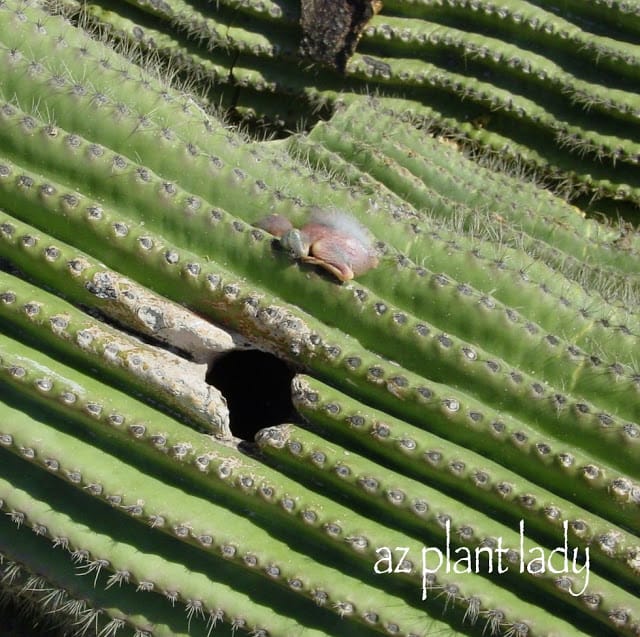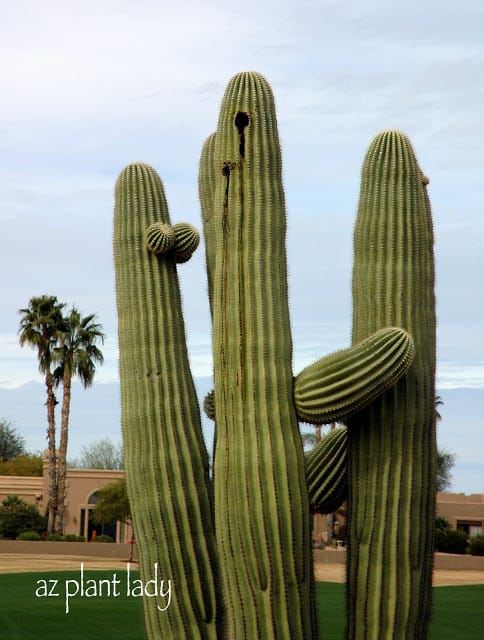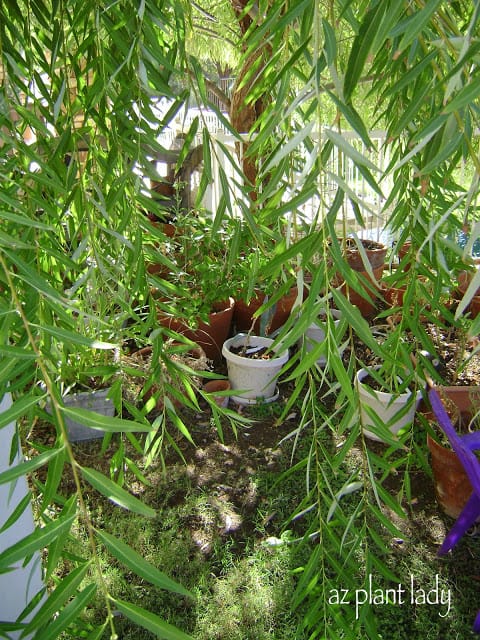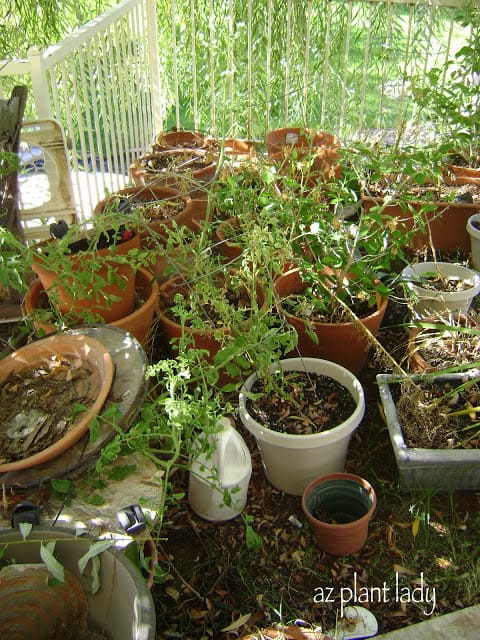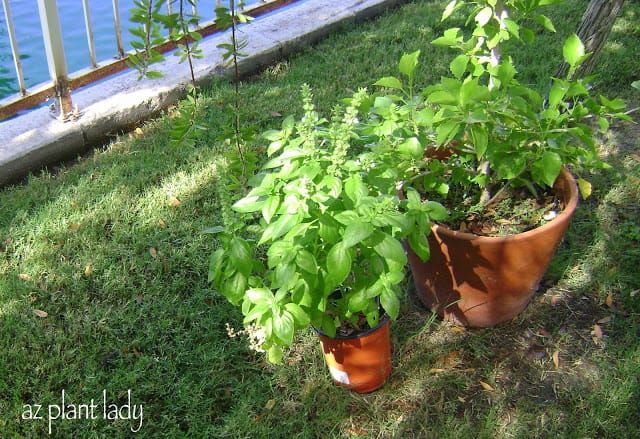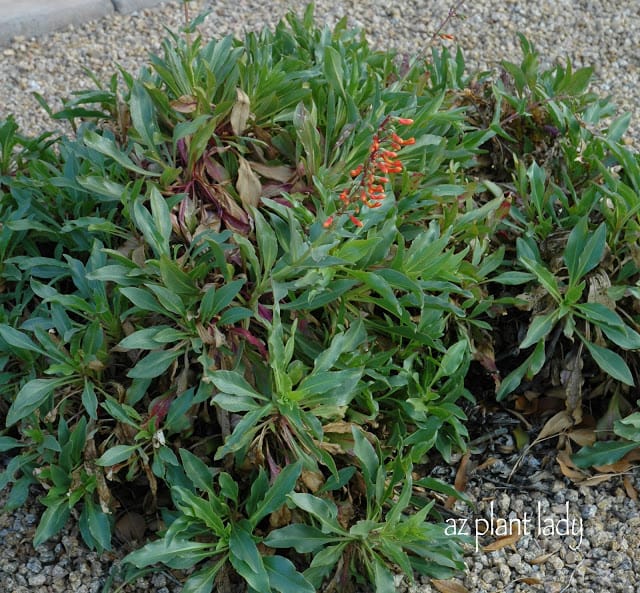Anyone who has spent any time with me in the garden, soon learns how much I dislike formal pruning of flowering shrubs and desert trees. In the plant industry, we sometimes refer to this type of pruning as ‘poodle pruning’ because of the over abundance of round-shaped trees and shrubs.
I spend a lot of time with clients, teaching them how to properly prune their trees and shrubs and most of the time it does not involve the use of a hedge trimmer.
I recommend throwing away your hedge trimmers if you are tempted to use them on your native, desert plants and use only loppers and hand pruners 😉
Over ten years ago, the community where I was working asked me to do a consultation for the local church. Part of the consultation involved going over the current maintenance practices. This church had a Texas Ebony tree (Ebenopsis ebano) that had not been pruned correctly. In fact, there were signs that the infamous hedge trimmers had been hard at work…..
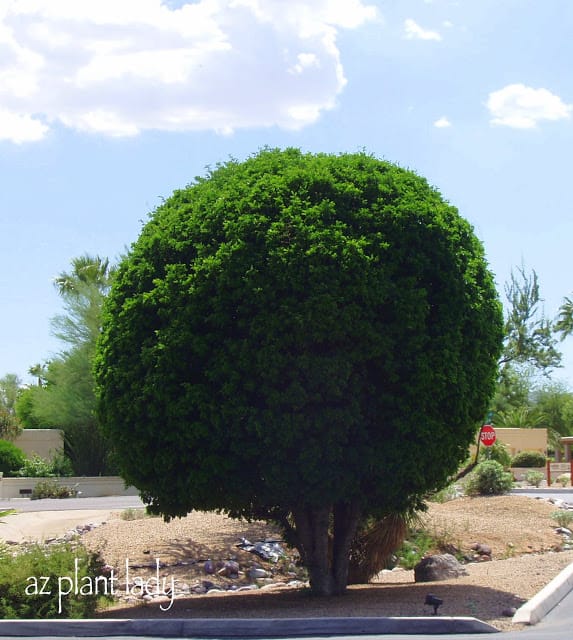
Now you may not think that this Texas Ebony tree looks all this bad. There may even be some of you who think that most trees should be maintained this way.
Well the reasons for not pruning your trees this way are many:
– Repeated shearing blocks the sunlight from reaching the interior branches, causing their eventual death which leaves large dead areas which are unattractive.
– This same type of pruning actually increases the maintenance required, because each time you prune, the tree works hard to replace the leaves lost. Remember, it is the leaves that make the food for the tree.
– This extra growth also requires the tree to take more water, which is already a precious resource here in the Southwest.
Now if those reasons do not convince you, please look at the photo below of the same tree, which is now being maintained as I had recommended….

You know what? It is so incredibly rewarding to revisit a landscape when those in charge have implemented some of my suggestions. Sadly, that doesn’t always happen 😉
Doesn’t this Texas Ebony look beautiful?
Now, a yearly pruning using a lopper or pruning saw is all this tree requires instead of multiple visits using a hedge trimmer.
Prune any dead and/or crossing branches and any over-reaching side branches as desired. Raise the tree canopy gradually until you reach the desired height above the ground.
Texas Ebony is a slow-growing tree with beautiful, dark green leaves. It does have thorns, so be sure to wear gloves and keep away from high traffic areas. Brown seed pods appear later in the year.
If the photos above have not convinced you not to prune your Texas Ebony into a ‘ball’, are some other examples of others that have been pruned to accentuate their natural shape…


So, which one would you rather have in your garden?


****************************
I would like to thank you all for your nice comments about my new Southwest blog at BirdsandBloomsblog.com
Here is a related post about formal pruning that you can read if you like:
Flowering Shrubs Aren’t Meant to be Cupcakes, Poodles or Frisbees











